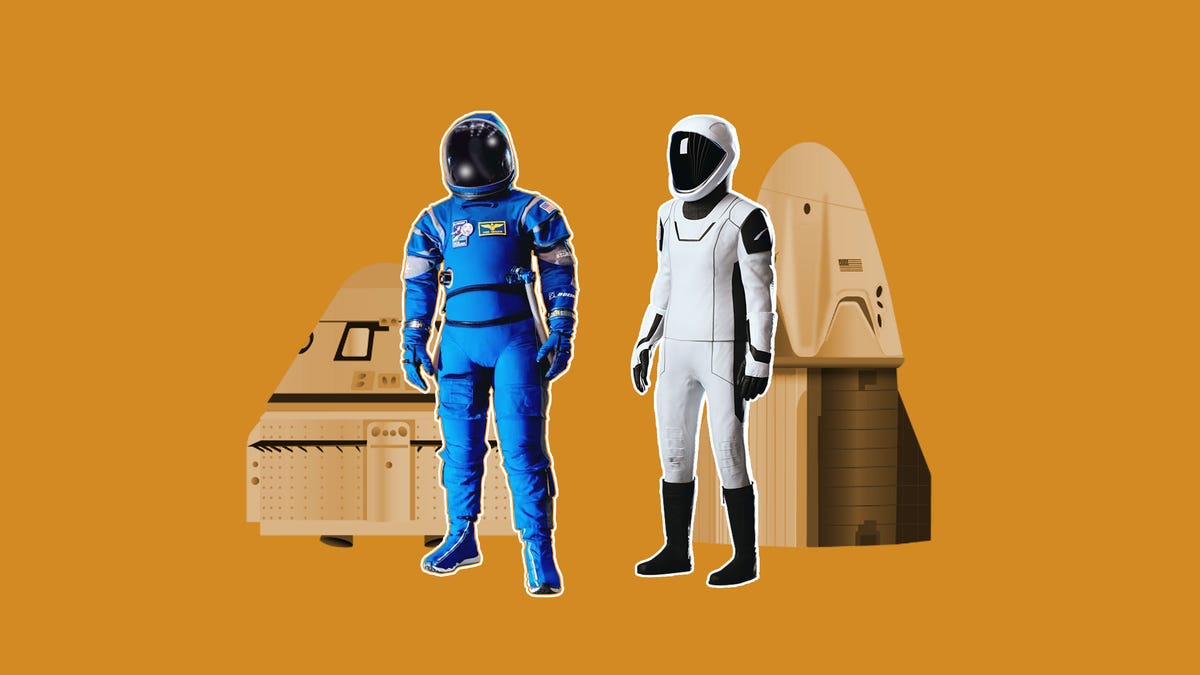The spacesuits for Starliner and SpaceX Dragon can’t be switched: Here’s why
The two astronauts who took a problematic Boeing Starliner capsule to the International Space Station in June will return in February using a different spacecraft, which means they will also wear different spacesuits.
Astronauts Sunita “Suni” Williams and Barry “Butch” Wilmore reached the space station on June 6 with the Starliner, which faced issues like helium leaks and thruster malfunctions but managed to dock safely.
Due to safety issues, NASA announced on August 24 that the astronauts would remain on the station until February and would come back in a SpaceX Dragon capsule. This Dragon mission is scheduled to launch on September 24. The Starliner landed uncrewed on September 7.
The Starliner and SpaceX Dragon have unique designs requiring custom-made spacesuits for each. NASA has specified that these differences are by design.
What sets the Starliner and SpaceX suits apart?
“From a suit perspective, they just aren’t interchangeable,” stated Joel Montalbano, NASA’s deputy associate administrator for Space Operations, during a media call on August 14.
Montalbano explained, “You can’t use a Boeing suit in a SpaceX capsule or vice versa. That’s not our plan,” in reply to a question about adapting suits for different flights.
Astronauts wear IVA (Intra-Vehicular Activity) spacesuits during spacecraft launch, flight, and reentry. These suits are crucial for protecting astronauts in emergencies, like cabin pressure losses or temperature shifts.
These IVA suits differ significantly from EVA (Extra-Vehicular Activity) spacesuits, which provide enhanced protection for spacewalks or surface activities on celestial bodies.
Reasons for the distinct spacesuit designs
The design variations begin with the spacecraft itself.
According to NASA, “Suits for different providers are specifically designed not to be usable outside their respective spacecraft; each suit’s design must correspond accurately to its specific system.”
The Boeing Starliner and SpaceX Dragon were both developed through NASA’s Commercial Crew program. This program allows NASA to “purchase astronaut transportation from Boeing and SpaceX as a service under fixed-price contracts.” It also permits NASA to focus on developing spacecraft for future deep-space missions.
NASA intended to create “two very different spacecraft with distinct procedures and support teams,” according to reports from space.com.
Steve Stich, program manager for NASA’s Commercial Crew Program, emphasized, “This has been our aim all along, to have two different systems, Starliner and Dragon,” during a press conference about the Boeing Starliner on March 22.
As part of the Commercial Crew program, NASA allows companies to innovate by designing and building components without detailed oversight, provided they adhere to NASA’s broad guidelines and safety standards, as reported by the Economic Times.
NASA’s design requirements provide maximum flexibility to companies in creating their systems to fulfill the spacecraft’s needs while ensuring crew safety, according to NASA.
Boeing and SpaceX have developed different spacecraft designs that necessitate uniquely crafted IVA spacesuits, each with exclusive fittings for life-support connections, restraints, and communications. Additional variations include differences in audio and cooling ports, helmet design, and materials used, according to NASA.
This is why astronauts wearing Starliner suits cannot simply switch to a SpaceX spacecraft and expect the same level of protection as their SpaceX-suited colleagues. NASA will supply SpaceX suits for Williams and Wilmore’s return.
Variety in systems enhances safety
While it may seem counterintuitive, having diverse systems in space can actually increase safety margins.
Generally, NASA’s crewed spacecraft are designed with redundancy; if one device fails, another can compensate for it. “If a device fails, there’s always a backup,” says NASA.
However, with the increasing number of nations venturing into space and launching various spacecraft, ordinary redundancy might not suffice. Instead, using dissimilar redundancy can be more effective. The distinction is as follows:
◾ Redundancy: Two identical systems serving the same function in the same manner.
◾ Dissimilar redundancy: Two independent systems accomplishing the same task through different methods. If one fails, the other stands ready, reducing the chance of a simultaneous failure.
Stich remarked during the news conference, “We’ve recognized how vital this dissimilar redundancy is. It’s always challenging to go to space. Having that alternative transportation system is extremely valuable to us.”
Source: YSL News Network reporting and research; NASA; JPL; space.com; Reuters; futurism.com

